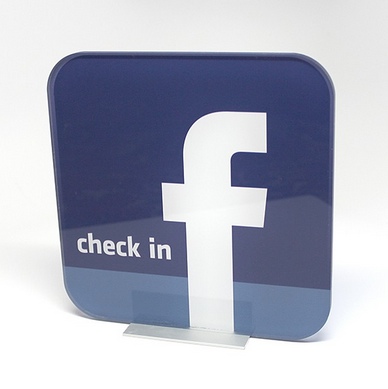Facebook Nearby has gotten a bit under-publicized due to the overwhelming anticipation and reaction to Facebook Graph Search. But for brands that have brick and mortar stores, this is something of note that will affect your omnichannel business in a very real way. Local search via mobile devices is a mainstream method of creating foot traffic to your store. Many services like Yelp and Google Maps show you what is nearby in a mostly unfiltered manner. Facebook Nearby is going to change that significantly. Instead of simply just showing what’s around, Nearby will be making recommendations via the lens of your social graph.

What does that mean? It means that what shows up on your device will look different from mine in many cases, dependent upon where/what you and your friends go and do and say in reviews. Foursquare does offer some reviews and badges but the context of what shows up is not directed by the social graph.
Why is Facebook doing this? Its part of Facebook’s Entity Graph, which is a direct shot at Google in its attempt to quantify the physical world, as covered by Fast Company: “The Entity Graph will take Facebook users’ data and use it to create a comprehensive bank of knowledge that will boost the social network’s knowledge base and, so the thinking seems to go, make its Graph Search more attractive to users than Google’s search engine, with its Knowledge Graph, which uses data from the CIA, Freebase, and Wikipedia”.
Why does this matter? It matters because Foursquare has 30 million users and currently Facebook has about 250 million users tagging locations every month. In sheer volume, the ability to get in front of new customers and use their influence to increase the likelihood of showing up in results for new customers is critical. Simple math will say that if your strategy depends on local, Facebook Nearby needs to be an immediate priority.
How can you get ahead? If you have a brick and mortar location that operates a local walk-in business then getting people to check in via Facebook on arrival and rate your location is of extreme importance. Signage saying like us on Facebook isn’t effective in most scenarios. So the most important thing is making the ability to check in easy and valuable to customers. Using NFC loyalty cards allows you pre-program auto check-in as a feature across Facebook, Foursquare and others. You need to make tapping in with your NFC phone or card upon arrival a normal part of their customer experience.
Innovation leadership tip: To get your customers engaged, you need to let them know that you understand their unique value through social media. Using the CloudTags data layer that is integrated with 37 social and online data API sources, we can score your customers and provide the logic to value their influence upon tap-in to offer the right value exchange. If someone taps in on arrival and has five friends, their impact on local search results will not likely be significant. Therefore the value exchange in what you offer them, should reflect that. Dynamic offers, discounts and incentives for a check-in have never been more important if your business depends on local. We can help.
We’re about to see a significant shift in the value of a check-in on Facebook. This will alter the current state of ill placed signage and post cards saying “like us on Facebook.” Get in front of this by acknowledging an appropriate value exchange for each customer’s check in. Its a great omnichannel challenge for brands. You have to understand the holistic value of each customer beyond purchase data to unlock the value they hold to expand your business through the power of graph based recommendations.
How many other services will be based off of an individuals graph results in the future? How does this change the role of social in omnichannel planning?